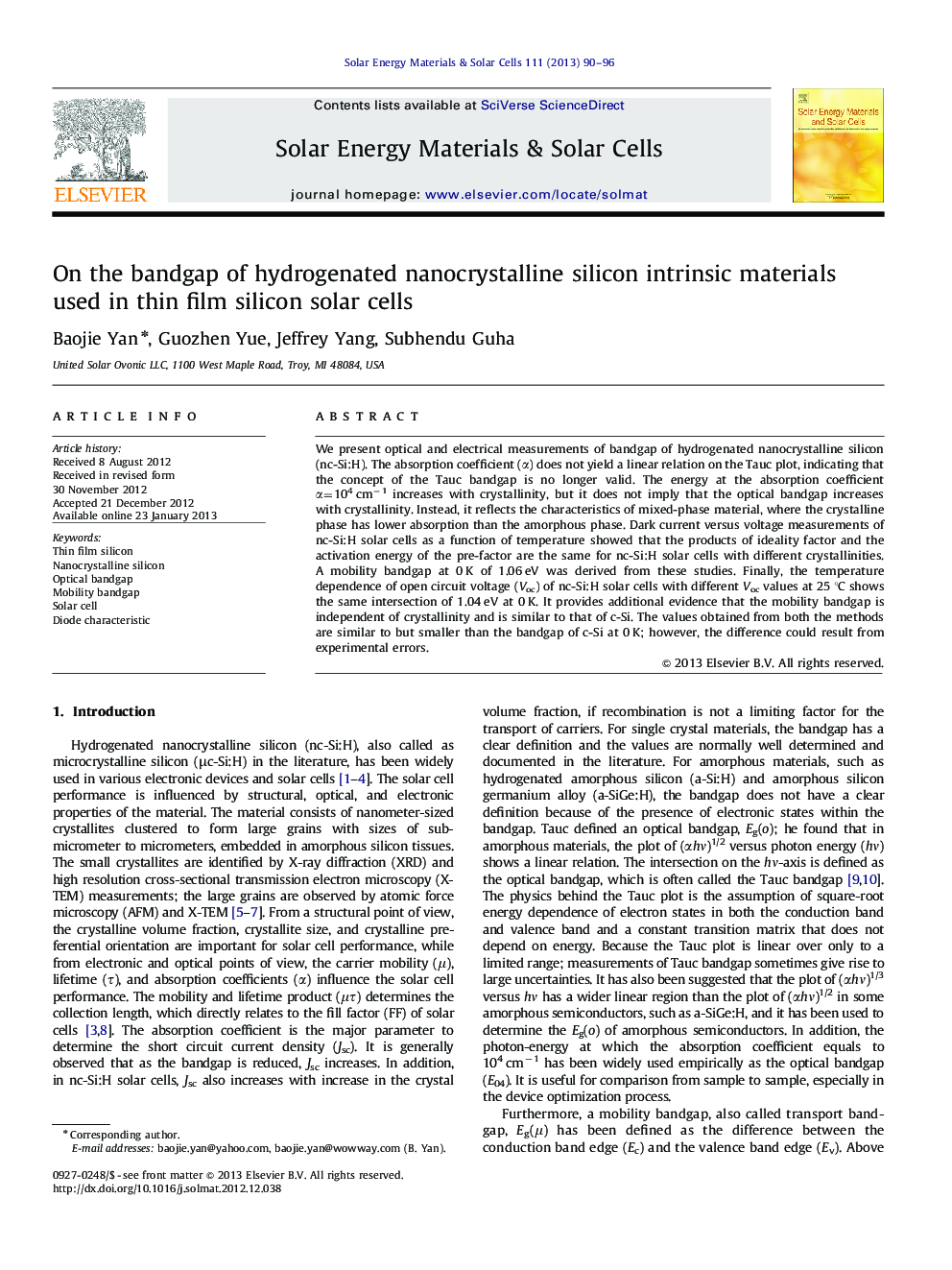| کد مقاله | کد نشریه | سال انتشار | مقاله انگلیسی | نسخه تمام متن |
|---|---|---|---|---|
| 78322 | 49328 | 2013 | 7 صفحه PDF | دانلود رایگان |

We present optical and electrical measurements of bandgap of hydrogenated nanocrystalline silicon (nc-Si:H). The absorption coefficient (α) does not yield a linear relation on the Tauc plot, indicating that the concept of the Tauc bandgap is no longer valid. The energy at the absorption coefficient α=104 cm−1 increases with crystallinity, but it does not imply that the optical bandgap increases with crystallinity. Instead, it reflects the characteristics of mixed-phase material, where the crystalline phase has lower absorption than the amorphous phase. Dark current versus voltage measurements of nc-Si:H solar cells as a function of temperature showed that the products of ideality factor and the activation energy of the pre-factor are the same for nc-Si:H solar cells with different crystallinities. A mobility bandgap at 0 K of 1.06 eV was derived from these studies. Finally, the temperature dependence of open circuit voltage (Voc) of nc-Si:H solar cells with different Voc values at 25 °C shows the same intersection of 1.04 eV at 0 K. It provides additional evidence that the mobility bandgap is independent of crystallinity and is similar to that of c-Si. The values obtained from both the methods are similar to but smaller than the bandgap of c-Si at 0 K; however, the difference could result from experimental errors.
► The Tauc bandgap cannot be defined in hydrogenated nanocrystalline silicon (nc-Si:H) materials.
► The mobility bandgap of nc-Si:H materials can be obtained by the temperature dependence of diode characteristics and temperature dependence of open circuit voltage of nc-Si:H solar cells.
► The mobility bandgap of nc-Si:H materials is similar to the bandgap of crystal silicon and does not depend on the crystallinity.
Journal: Solar Energy Materials and Solar Cells - Volume 111, April 2013, Pages 90–96